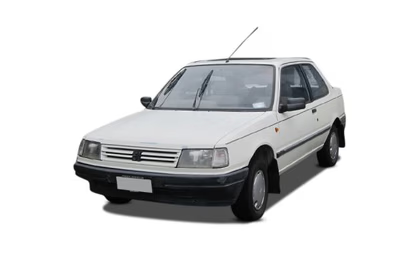

The Peugeot 309 is a small family car (C-segment) produced from 1985 to 1997. It was an important model in the brand's history as it was the first Peugeot to use a "09" naming convention and was developed using the chassis of its predecessor, the Talbot Horizon.
Overview
Originally intended to be the Talbot Arizona, the project was rebadged as a Peugeot following the merger of Peugeot with Chrysler's European operations (Simca, which became Talbot). The 309 shared many components with the highly successful Peugeot 205, contributing to its light weight and praised handling characteristics. It was available as a 3-door and 5-door hatchback and was popular in the UK and Europe.
Key Variants
309 GTi: Following the success of the 205 GTi, Peugeot introduced a GTi version of the 309 in 1987. It shared its 1.9-litre engine with the 205 GTi 1.9 but offered a larger, more practical body. The 309 GTi is considered by many enthusiasts to be a superior driver's car due to its more stable handling at high speeds.
309 Goodwood: A limited edition GTi model with unique green paintwork, leather interior, and alloy wheels.
Common Problems and Reliability
Given its age, most 309s that are still on the road are cherished classics. They are known for being mechanically simple and robust, but they do have specific weak points: Rust: Corrosion is a primary concern, with common areas including the wheel arches, sills, and around the tailgate.
Rear Axle Wear: The trailing arm suspension system in the rear (similar to the 205 and 306) is prone to bearing failure over time if not regularly maintained, leading to rear wheel alignment issues and costly repairs.
Timing Belt: As with any older engine, regular timing belt replacement is crucial for the petrol and diesel engines to prevent major internal damage.
Electrical Issues: Minor electrical gremlins are common, such as instrument cluster malfunctions or faulty central locking, often due to general wear and tear of aging wiring.